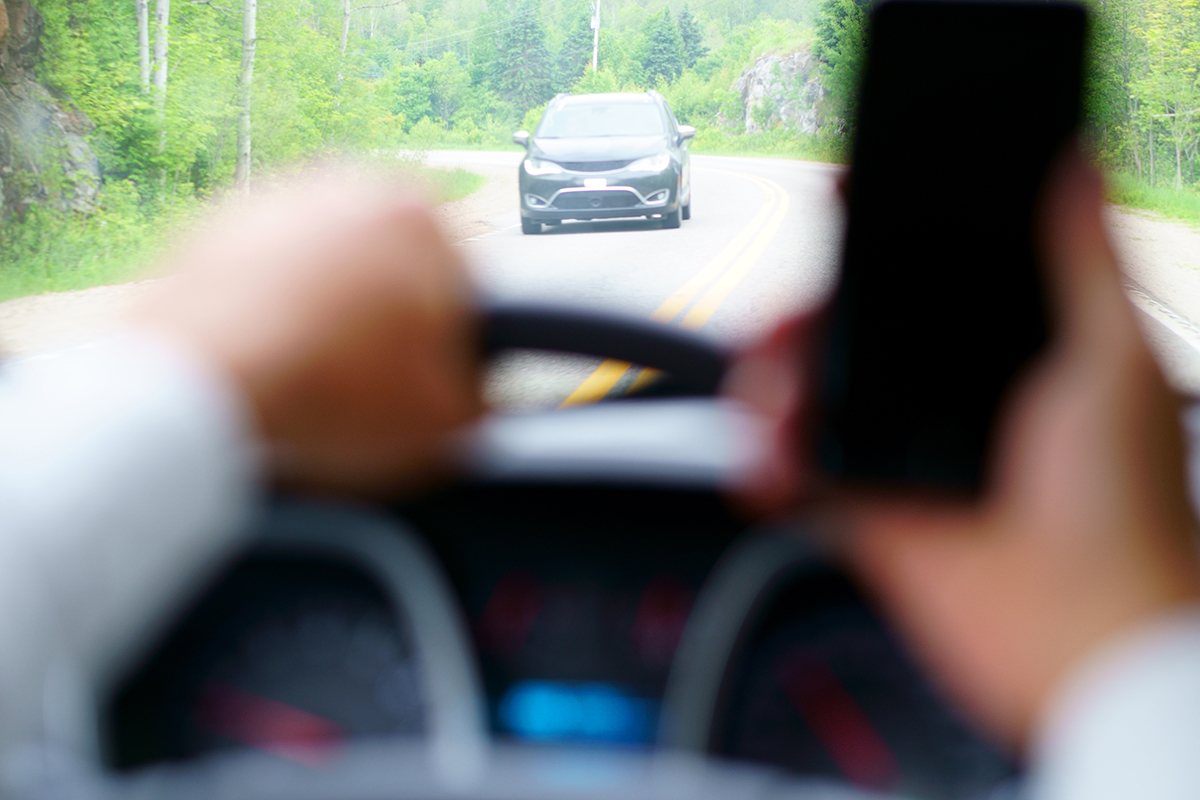
DEFENSIVE DRIVING I
Expanding Your Look-Ahead Capacity
One of the highest risk activities we’re regularly exposed to is driving – both in company and personal vehicles. Nelson Tree uses the principles associated with the letters E.S.S.P.T. to help drivers improve their driving behaviors.
Many people can recite what each letter of E.S.S.P.T. stands for but understanding and applying the principles is the real goal. This tailgate is the first in a series designed to reinforce our understanding each of the principles of E.S.S.P.T.
THE “E” OF E.S.S.P.T.
Many drivers tend to look immediately in front of their vehicles using either the left or right fender as a sighting tool. Expanding your look-ahead capacity is a process of keeping the eyes moving from the area immediately around you, to the road ahead, and back. Drivers should develop a habit of looking 8 – 12 seconds ahead of their vehicle or about two blocks ahead when driving in city settings.

THE BENEFITS OF EXPANDING YOUR LOOK-AHEAD CAPACITY
Expanding your ahead capacity will allow you to:
- Keep your vehicle centered in its lane
- See traffic signals in the distance and adapt your speed to changing traffic patterns
- Be able to quickly recognize and respond to potential traffic and pedestrian problems
TALKING POINTS
- Ask crews if they feel being overly tired has any effect on determining how far a driver looks ahead of their vehicle.
- It only makes sense that poor weather can negatively impact a driver’s ability to look far enough ahead. Ask crews how they can increase the reaction time needed to respond to sudden hazards.
- Driving in neighborhoods with cars parked along curbs means drivers usually have to slow down and the hazards are different than when driving open roads. How would drivers effectively expand their look ahead capacity and what types of hazards should they be looking for?
Safely operating a motor vehicle requires a driver’s total attention. Accordingly, the following requirements and best practices are the minimum requirements that apply to all employees at all times when driving a company vehicle or while operating a personal or rental vehicle while engaged in company business. Employees must also comply with all state and local laws.
- Drivers will not read or send emails, texts or electronic messages in a moving* vehicle.
- Drivers will not manually dial a cell phone or other communication device in a moving vehicle.
- Drivers may talk and drive while on a cell phone only if permitted by state law, during the following conditions:
- When using a hands-free** device;
- When the following distance is increased to a least 4 seconds; and
- When not driving through a construction zone.
- Drivers must avoid activities that increase the likelihood of distractions (eating, drinking, reading, writing, etc.)
- Laptop computers are to be kept closed while vehicle is in motion.
- GPS Directional Guidance Devices may be used but may not be programmed by the driver while the vehicle is moving. Treat the GPS as you would a gauge on the dashboard by not staring at it for longer than two (2) seconds.
- The driver/passenger compartment of all vehicles must be kept clean and free from loose material that may move or shift during transit and cause a distraction for the driver.
- Team Driving – at least one other person in the vehicle (in addition to the driver) must stay awake and alert to conditions around the vehicle.
* NOTE: “Moving” is defined as wheels turning at any speed.
** NOTE: “Hands-free” is defined as a device that allows the user to speak and listen without the use of physical contact with the phone. If a driver uses a personal cell phone on company time, the same rules apply.
Click here to download a PDF of this edition of Nelson Tree Service Tailgate Safety


